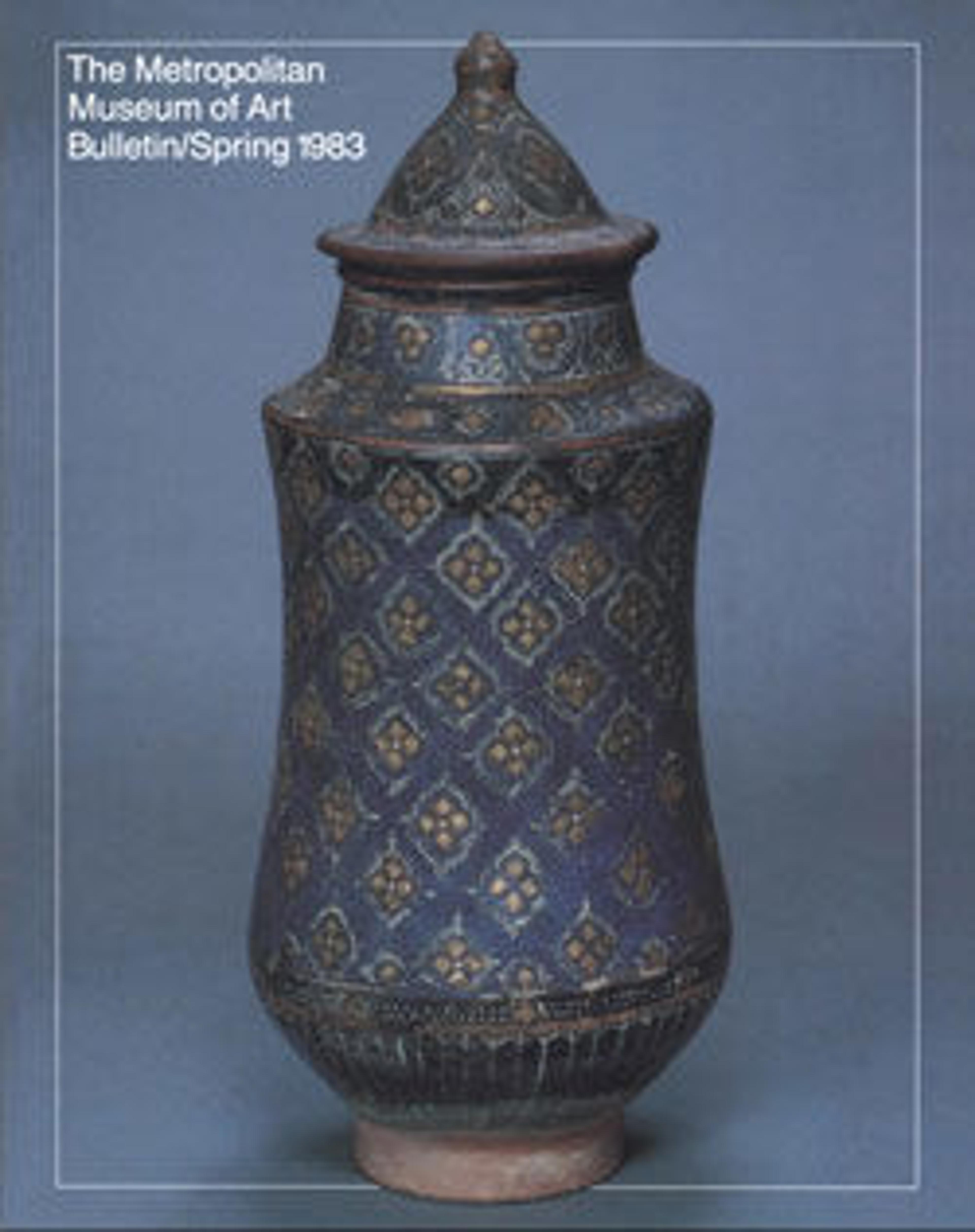Hexagonal Tile Ensemble with Sphinx
By the early twentieth century, the two-story Konya Köşk had largely fallen into ruin, but architectural fragments speak to its former artistic sophistication and lavish polychrome ornamentation. The upper story of this Rum Seljuq “citadel-palace” was dominated by an iwan with balconies on three sides facing outward over the sultanate’s capital, Konya, thereby functioning as both a belvedere and a point from which the sultan could consider his dominion. The luxurious mina˒i ceramic technique of these tiles is reminiscent of that associated with the luxury vessels made in Kashan, Iran. The stucco reliefs also recall the artistic language developing both in the eastern and western parts of the Seljuq realm, which eventually extended into Christian lands, as seen in comparable stucco reliefs found at the Armenian capital at Ani. The imagery of real and fantastic animals, such as this sphinx (1976.245), and scenes of equestrian combat or royal hunt – illustrated for example through the motif of chasing animals seen in stucco fragments (1984.505a-d) – aimed to re-create an earthly paradise or the ideal life and just dominion of the sovereign presiding over this cosmos. It also offered supernatural and magical protection to the ruler, his entourage, and the sultanate. The Konya Köşk, although situated in an urban environment, evoked the ideal natural setting awaiting the sultan at his country pavilions as well as the paradisiacal ideal awaiting him in heaven.
Artwork Details
- Title: Hexagonal Tile Ensemble with Sphinx
- Date: ca. 1160s–70s
- Geography: From Turkey, Konya
- Medium: Stonepaste; over- and underglaze-painted, gilded
- Dimensions: H. 9 1/4 in. (23.5 cm)
W. 8 1/4 in. (21 cm)
D. 1 1/8 in. (2.9 cm) - Classification: Ceramics-Tiles
- Credit Line: Gift of Mr. and Mrs. Jack A. Josephson, 1976
- Object Number: 1976.245
- Curatorial Department: Islamic Art
More Artwork
Research Resources
The Met provides unparalleled resources for research and welcomes an international community of students and scholars. The Met's Open Access API is where creators and researchers can connect to the The Met collection. Open Access data and public domain images are available for unrestricted commercial and noncommercial use without permission or fee.
To request images under copyright and other restrictions, please use this Image Request form.
Feedback
We continue to research and examine historical and cultural context for objects in The Met collection. If you have comments or questions about this object record, please contact us using the form below. The Museum looks forward to receiving your comments.
